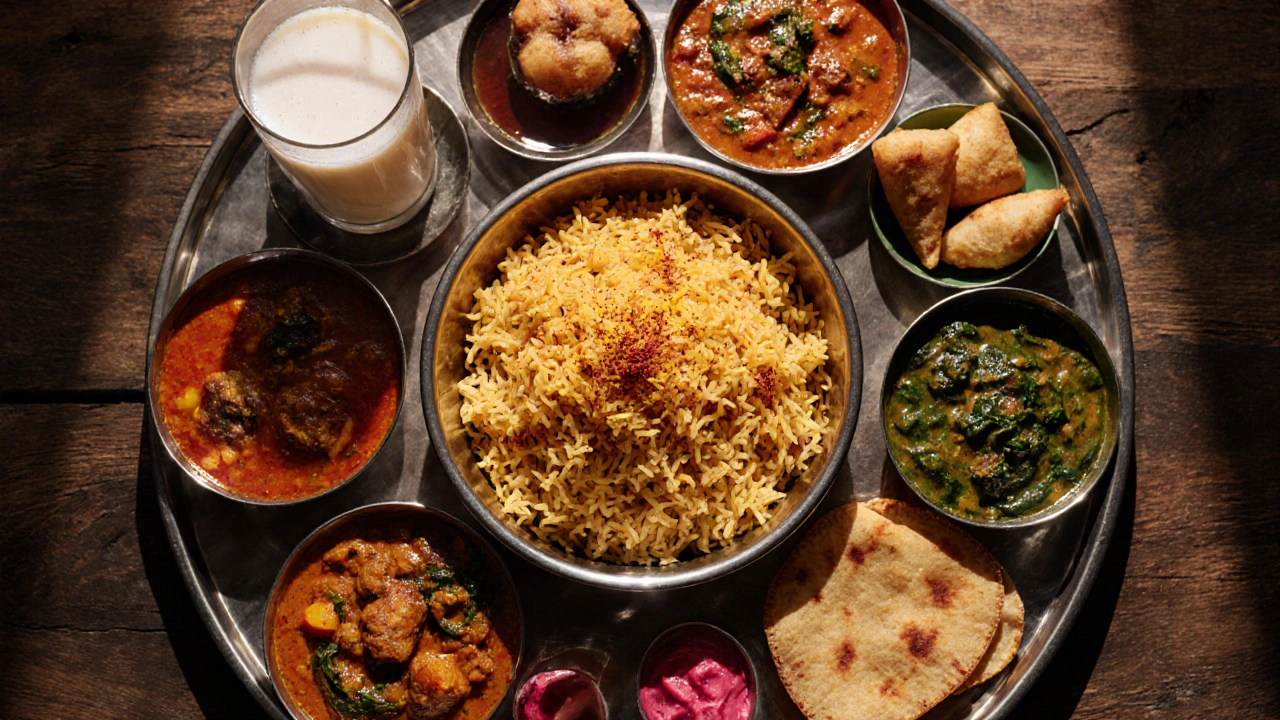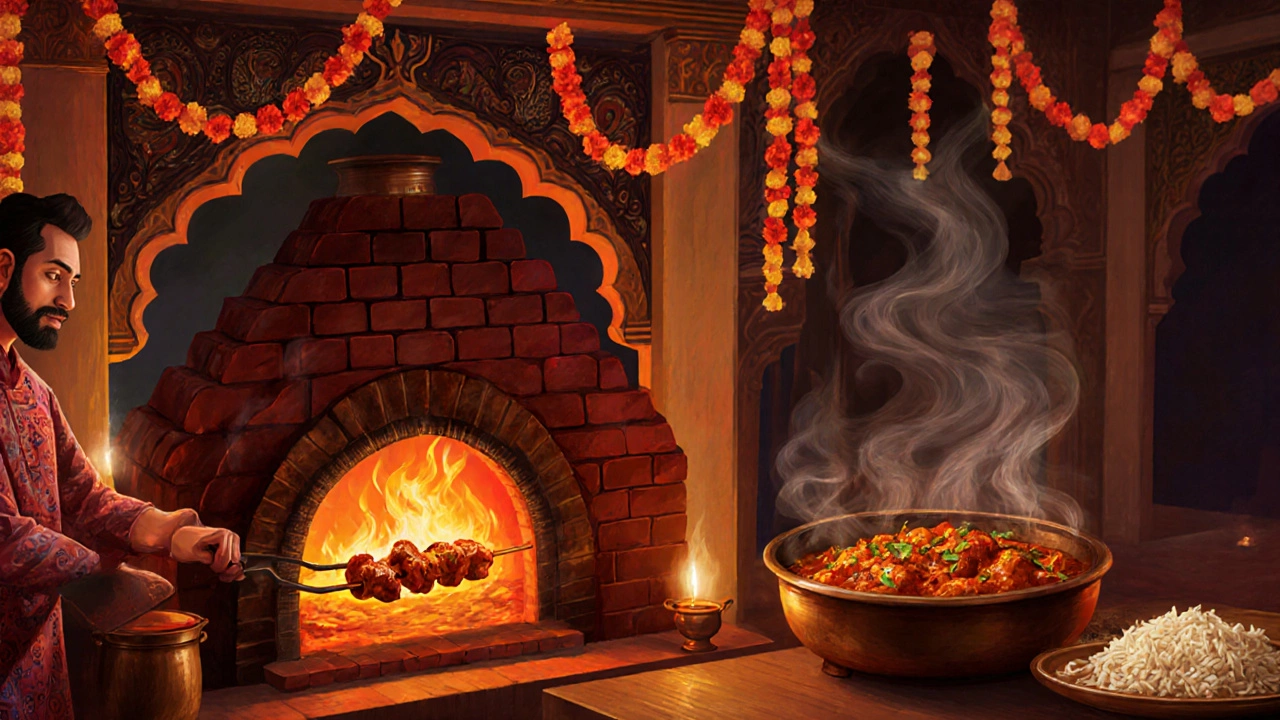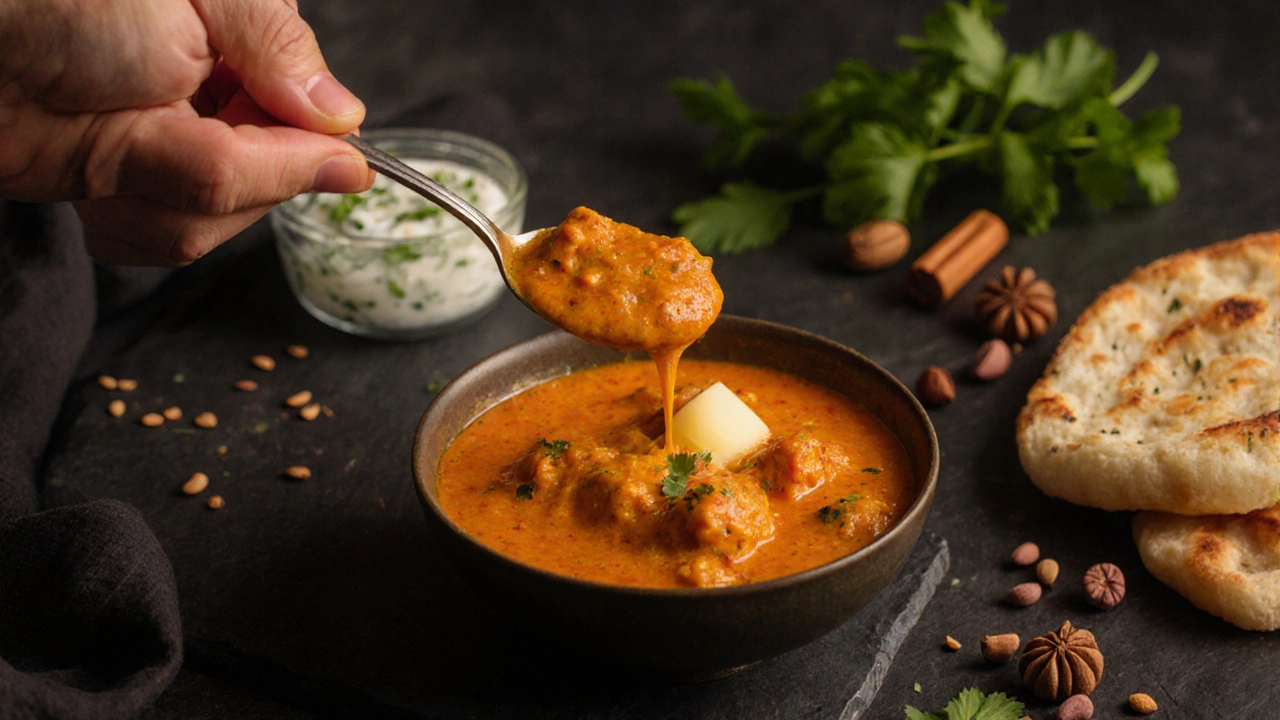Classic Indian Dishes Explained: Definition, Top Examples & Regional Guide
 Oct, 2 2025
Oct, 2 2025
Classic Indian Dishes Explorer
Select a Region
| Dish | Primary Ingredient | Typical Occasion | Origin City / State |
|---|
Select a dish from the table above to view details.
Quick Takeaways
- A classic Indian dish blends history, regional flavors, and cultural rituals.
- Iconic dishes include Biryani, Masala Dosa, Butter Chicken, Rogan Josh, CholeBhature, Samosa, Palak Paneer, and Gulab Jamun.
- Each region-North, South, East, West-has its own signature ingredients and cooking techniques.
- Look for widely celebrated festivals, family traditions, and centuries‑old recipes to spot a true classic.
- Trying a classic dish is best done with simple sides: fresh naan, raita, or a squeeze of lemon.
What Makes a Dish ‘Classic’ in Indian Cuisine?
In India, a dish earns the classic badge when three things line up: deep roots in history, a strong regional identity, and a place in everyday celebrations. If a grandma can still make it the same way she learned from her mother, chances are it’s classic. Classic dishes also travel across state borders while keeping their core flavors intact-think of a recipe that’s recognizable whether you order it in Delhi, Mumbai, or a tiny village in Kerala.
Regional Pillars of Classic Indian Dishes
India’s culinary map is a patchwork of climates, spices, and cooking customs. Below, we break down the four main regions and the dishes that define them.
North India: Rich, Creamy, and Oven‑Baked
North Indian classics love dairy, slow‑cooked meats, and tandoor ovens. Two stand‑out dishes dominate the conversation.
Butter Chicken is a creamy tomato‑based curry made with tender chicken, butter, and a blend of aromatic spices like garam masala and kasuri methi. Its origins trace back to 1950s Delhi, where a restaurant chef mixed leftover tandoori chicken with a buttery tomato sauce to avoid waste. The result became a worldwide favorite.
Rogan Josh is a slow‑cooked lamb curry infused with Kashmiri red chilies, yogurt, and earthy spices such as cardamom and clove. It arrived in Kashmir via Persian influence, earning its name-"Rogan" meaning oil and "Josh" meaning passion-because the lamb swims in a rich, aromatic gravy.
South India: Fermented, Crispy, and Coconut‑Heavy
South Indian cooking leans on rice, lentils, and coconut. Two iconic dishes illustrate this style perfectly.
Masala Dosa is a thin, fermented rice‑lentil crepe stuffed with a spiced potato filling, typically served with coconut chutney, sambar, and a dollop of ghee. The dosa’s crispiness comes from a hot iron plate, while the fermentation gives it a subtle tang.
Sambar is a lentil‑based stew brimming with vegetables, tamarind, and a proprietary spice blend called sambar powder. Though not a main course, sambar accompanies most South Indian meals, reinforcing the region’s love for balanced, tangy flavors.
West India: Spicy, Sweet, and Street‑Food‑Ready
West Indian cuisine thrives on bold spices, peanuts, and a hint of sweetness.
CholeBhature is a hearty chickpea curry paired with fluffy, deep‑fried leavened bread called bhature. The dish became popular in Punjab during the British era, as street vendors needed a filling, portable snack for laborers.
Gulab Jamun is a soft deep‑fried milk‑based dough balls soaked in a fragrant sugar syrup flavored with rose water, cardamom, and saffron. Although technically a dessert, its presence on festive tables makes it a cultural hallmark across the West.
East India: Delicate, Sweet‑Sour, and Fish‑Centric
East Indian cooking showcases mustard oil, poppy seeds, and river fish.
Pakhala is a fermented rice water dish served with fried or mashed vegetables, popular in Odisha during summer for its cooling effect. While not a main meat dish, it represents the region’s emphasis on probiotic foods.
Rasgulla is a spongy syrupy cheese ball originating from Bengal, made from chhena (fresh cottage cheese) cooked in light sugar syrup. Its silky texture and simple preparation have made it a hallmark sweet across East India.

How to Identify a Truly Classic Dish
When you’re scanning a menu or a recipe blog, ask yourself these quick checks:
- Historical depth: Does the dish have a story that dates back at least a generation?
- Regional pride: Is the dish closely tied to a specific state or city?
- Widespread celebration: Do families serve it during festivals, weddings, or everyday meals?
- Ingredient authenticity: Are the core ingredients native to the region (e.g., coconut in Kerala, mustard oil in Bengal)?
- Consistent preparation: Do most cooks follow a similar method, even if minor tweaks exist?
If you can answer “yes” to most of these, you’ve likely found a classic.
Quick Guide to Tasting a Classic Indian Dish
Enjoying a classic dish isn’t just about eating-there’s a ritual you can follow to fully appreciate the flavors.
- Set the scene: Use a plain plate, a small bowl of raita or pickle, and if possible, a traditional metal thali.
- Smell first: Inhale the steam; aroma tells you which spices dominate.
- Take a bite with a spoon: For curries, scoop a bit of sauce with rice or naan to mingle textures.
- Balance flavors: Notice the dance between sweet, salty, sour, and spicy-classic dishes aim for harmony.
- Finish with a sip: A glass of lassi or chilled water helps reset the palate for the next bite.
Classic Indian Dishes by Region
| Dish | Primary Ingredient | Typical Occasion | Origin City / State |
|---|---|---|---|
| Biryani | Basmatri Rice + Meat/Vegetables | Weddings, Festive Feasts | Hyderabad, Telangana |
| Masala Dosa | Fermented Rice‑Lentil Batter | Breakfast, Street Snacks | Karnataka |
| Butter Chicken | Chicken + Tomato‑Butter Sauce | Dinner, Restaurant Menus | Delhi |
| Rogan Josh | Lamb + Kashmiri Spices | Special Occasions | Kashmir |
| CholeBhature | Chickpeas + Fried Bread | Brunch, Street Food | Punjab |
| Samosa | Potato Filling + Wheat Pastry | Tea‑Time Snacks | Uttar Pradesh |
| Palak Paneer | Spinach + Fresh Cheese | Vegetarian Feasts | North India (General) |
| Gulab Jamun | Milk Solids + Sugar Syrup | Dessert, Festivals | North India (Punjab/Delhi) |
Common Pitfalls When Choosing ‘Classic’ Dishes
Not every dish with a fancy name is classic. Beware these traps:
- Modern fusions: Restaurants often rebrand a new creation with a classic‑sounding name. Check the origin story.
- Regional mislabeling: Some dishes travel and get claimed by multiple states. Look for the earliest documented reference.
- Ingredient swaps: Substituting key ingredients (e.g., using coconut milk in a traditional butter chicken) changes the identity.
Sticking to the criteria in the “Identify a Truly Classic Dish” section helps you stay authentic.

Frequently Asked Questions
What defines a ‘classic’ Indian dish?
A classic Indian dish is anchored in history, tied to a specific region, and featured in everyday celebrations or festivals. It uses traditional ingredients and cooking methods that have remained largely unchanged across generations.
Are there vegetarian classics?
Absolutely. Palak Paneer, Masala Dosa, and CholeBhature are all vegetarian staples that enjoy classic status in their respective regions.
Which classic dish is best for beginners?
Masala Dosa is beginner‑friendly because the batter can be prepared in advance and the cooking process is straightforward. Pair it with ready‑made sambar and chutney for a complete experience.
Can classic dishes vary by household?
Yes, small tweaks-like adding a dash of cinnamon to Biryani or using mustard seeds in Chole-are common. As long as the core ingredients and cooking style stay true, the dish retains its classic identity.
Where can I find authentic classic dishes outside India?
Look for Indian restaurants run by families from the dish’s region-e.g., a Kerala‑owned eatery for Masala Dosa, or a Punjabi family kitchen for Butter Chicken. Community festivals and cultural fairs also showcase authentic preparations.